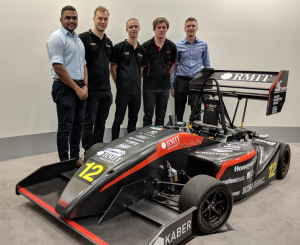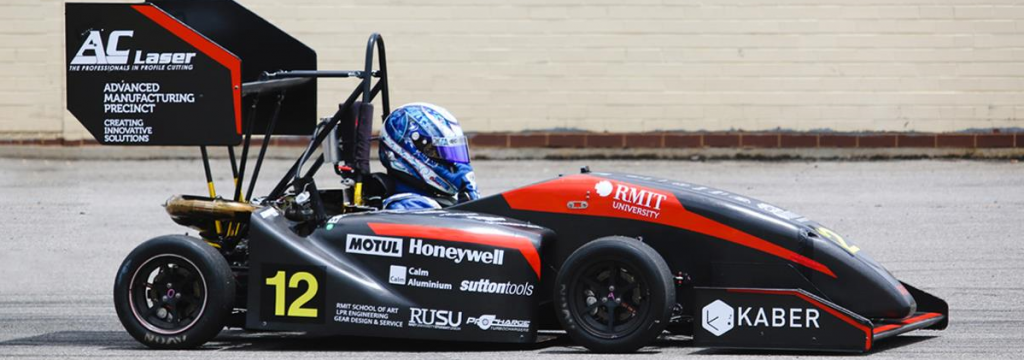At RMIT Racing we have just entered the detailed design phase for our 2018 F-SAE season, and this year more than ever, we have a real focus on simplicity and manufacturability. R18c will see a drastic design change from anything we have done in the past, this year moving away from the Yamaha Genesis 80Fi and transitioning to the KTM 690 ‘Duke’. A complete overhaul of our fundamental ideas of aerodynamic design as well as its integration into the chassis and vehicle dynamics systems will also be a primary focus this year.
 The manufacturing side of R18c in particular has been heavily examined and reshaped in the pursuit of having a drivable vehicle as quickly as possible in the season. With this in mind, both the combustion and electric teams have decided to employ the use of Augmented Reality (AR) with technical support from our new industry sponsors, LEAP Australia, for both the computer aided design (CAD) and simulations including CFD and FEA.
The manufacturing side of R18c in particular has been heavily examined and reshaped in the pursuit of having a drivable vehicle as quickly as possible in the season. With this in mind, both the combustion and electric teams have decided to employ the use of Augmented Reality (AR) with technical support from our new industry sponsors, LEAP Australia, for both the computer aided design (CAD) and simulations including CFD and FEA.
A prototype AR experience is currently in use on the R17c vehicle with students and sponsors able to use smart devices (such as tablets and smartphones) to view the inside of the billet transmission housing and see each and every gear, bearing and bolt that comprises the gearbox. Not only does this provide a great showpiece item, but it also allows our junior members to see how one of the most complicated components of R17c fits together without having to physically pull the transmission apart.

With the ability to display almost any 3D digital information in the real world, we are now able to see inside previously closed off objects such as the carbon layup of a chassis, the inside of an engine or view parts of a system independently. It is a great aid in helping to gain a spatial understanding of proposed changes or current designs, as well as offering a pre-manufacturing check to avoid issues or conflicts with new designs.
The initial RMIT Racing AR experience was launched at the 2017 RMIT Welcome Day and will again be on display at the 2018 RMIT Welcome Day. This time however, we will also be showing off AR based around the CFD over the front and rear wings of R17c, as you can see in this video below:
Aerodynamics is often considered to be one of the hardest concepts to grasp in the automotive industry and even more so in Formula Student. Using the existing CAD model, a transient CFD simulation using accurate transient turbulence modelling was created in ANSYS Fluent. This simulation was then sent to LEAP Australia in collaboration with Dr. Marco Losurdo who used PTC Vuforia technology to visualise in AR the transient variations in turbulent vorticity in the airflow over our R17c car.
This allows us to see the vortices shedding off the front wing as well as the interaction between the front wheels and the sidepods. Not only is this invaluable in helping to understand what is going on in a physical sense, but this can also be used alongside our current R&D, combined with wind tunnel testing, to verify and validate these simulation results data to physical data.
RMIT Racing will continue to utilise AR to help with the design, manufacture and research for each of our systems and will also look to further expand the use of AR in to more marketing and vehicle servicing applications. With a very short amount of time left to complete the detailed design phase of R18c, we look forward to using AR to help ensure the accuracy and ease of manufacturing so that our drivers can start shredding some tyres!
Update: when LEAP visited RMIT Racing in 2018, the following additional footage was captured - Enjoy!






